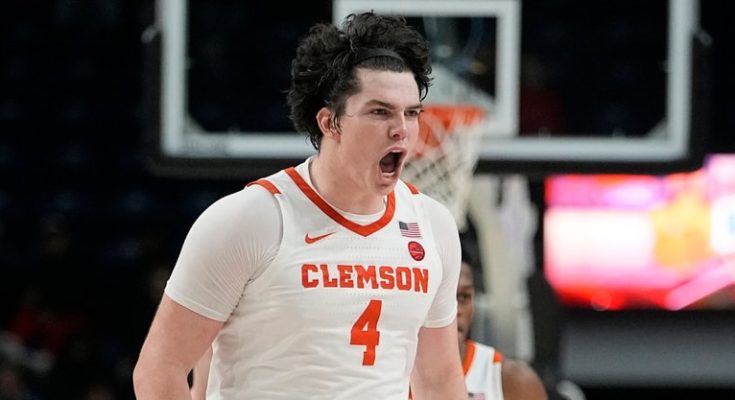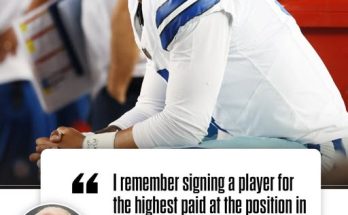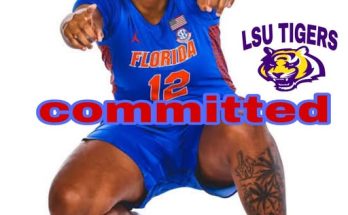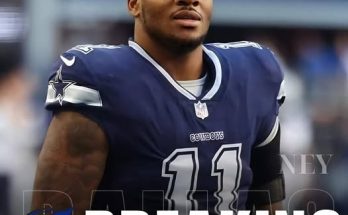Ian Schieffelin’s story this year is one of ambition, adaptability, and the refusal to let go of a dream even when life takes you in an entirely new direction. Known to many as a key presence on Clemson’s basketball team, Schieffelin surprised fans and analysts alike when he made the decision to also join the Clemson football program. It was the type of crossover move that sparks immediate curiosity—why would a player with legitimate professional basketball aspirations step into the physically demanding and mentally different world of college football? For Schieffelin, the answer lies in his love for competition, his willingness to embrace challenges, and his confidence that pursuing football now does not mean closing the door on his basketball future. In fact, if you ask him, the door to professional basketball remains wide open, and he intends to keep it that way.
Schieffelin’s move is unusual but not unprecedented in the world of collegiate athletics. Some players have balanced dual-sport participation, but it’s rare at the Division I level, especially at a powerhouse like Clemson where expectations in each sport are sky-high. He arrived on campus initially to contribute on the hardwood, developing into a reliable presence under the rim with his rebounding, physical defense, and emerging offensive touch. His game, marked by a mix of grit and finesse, had some scouts quietly noting that with continued development, he could find his way into professional opportunities, whether in the NBA, the G League, or overseas. But somewhere along the way, the lure of football—a sport he had experience with earlier in his life—called him back. Clemson’s football staff saw potential in his frame, athleticism, and mentality, and the invitation to join the team was extended. Many athletes would hesitate, fearing injury or the impact on their primary sport, but Schieffelin saw it as a new challenge worth embracing.
For those who have followed Schieffelin’s athletic journey, this transition is not entirely shocking. He has always carried himself with the mindset of an all-around athlete. In high school, he was known for his competitiveness in multiple sports, and while basketball ultimately became his primary focus, football remained a passion that was never fully extinguished. His 6-foot-8 frame, long reach, and physical style of play in basketball translate well into certain football roles, particularly at tight end. Clemson’s football program recognized that, and the opportunity to add a versatile athlete with his size and coordination was too good to pass up. The decision to step into pads and a helmet again was as much about embracing the team’s culture as it was about personal challenge.
The biggest question many have is how this choice affects his basketball aspirations. To that, Schieffelin offers a clear response—his dream of playing professionally remains alive and well. He views football as an additional layer of experience, not a diversion from his main long-term goal. In his eyes, the skills, toughness, and mental resilience he gains from football can only make him a better basketball player. There is a history of athletes who have managed to juggle different sports and still carve out professional careers in their primary discipline. The key, he believes, lies in staying dedicated to basketball training during the offseason, maintaining conditioning, and keeping his fundamentals sharp even while committing fully to football in its season.
This mindset says a lot about Schieffelin’s confidence and work ethic. Balancing two high-demand sports at Clemson is no easy task. Basketball workouts, film sessions, and team obligations are already taxing enough. Football adds a whole new level of physicality and preparation, including weight training, positional drills, and playbook study. For most, it would feel overwhelming, but Schieffelin thrives in structured chaos. He’s the type of athlete who wakes up early to get in extra shooting reps before football meetings and stays late after practice to fine-tune footwork or ball-handling drills. His coaches in both sports praise his discipline and ability to stay present in whichever environment he’s in at the moment. When he’s in the football facility, he’s a football player through and through. When he’s back in the basketball gym, the switch flips, and his focus is entirely on hoops.
Fans have reacted to his decision with a mix of excitement and curiosity. Clemson supporters love a good crossover story, and Schieffelin’s willingness to represent the Tigers in two marquee sports instantly makes him one of the most interesting athletes on campus. There’s also a sense of admiration for the boldness of the move—few would risk their primary sport’s trajectory for something as demanding as football, but his belief in himself and his future is unshaken. On social media, conversations often revolve around how his football skills might evolve or how his basketball game could look after a season of high-intensity football training. Some have even joked that he’s Clemson’s version of a modern-day Bo Jackson or Deion Sanders, albeit with a basketball-football combination instead of baseball-football.
Of course, with the excitement comes concern. Injuries are a real risk in football, and a major setback could jeopardize his basketball aspirations. Schieffelin is well aware of this reality but refuses to let fear dictate his decisions. He knows the value of taking calculated risks in pursuit of personal growth. To him, stepping into the unknown is part of what makes sports—and life—worthwhile. The Clemson medical and strength staffs are working closely to ensure his workload is balanced and that his body is prepared for the unique demands of each sport. Nutrition, recovery, and physical therapy will all play critical roles in helping him stay healthy year-round.
When talking about his basketball future, Schieffelin speaks with both realism and optimism. He knows the competition to reach the professional ranks is fierce, but he’s confident in his ability to keep improving. His size, athleticism, and defensive versatility already give him a unique profile as a forward who can guard multiple positions. Add in his growing offensive skill set, and he believes he has the tools to catch the attention of pro scouts. Playing football, in his view, doesn’t diminish that—it might even enhance it. Football develops a unique kind of physicality, hand-eye coordination, and mental toughness that can be advantageous in basketball. It forces athletes to think quickly under pressure, absorb contact, and maintain peak conditioning, all of which can translate positively to the court.
In many ways, Schieffelin’s decision is also a statement about identity. Too often, athletes are pigeonholed into one role, one sport, or one narrative. He refuses to let himself be defined by a single label. He is a competitor above all else, someone who embraces every opportunity to push his limits and see how far his abilities can take him. Whether he’s catching passes on the football field or grabbing rebounds on the basketball court, the underlying drive remains the same—be the best version of himself and represent Clemson with pride. His journey is a reminder that athletes don’t have to follow a singular, linear path to success. Sometimes, the most rewarding stories come from those who choose the unconventional route.
Looking ahead, the balancing act will continue to challenge Schieffelin. The overlap of seasons, the demands of practice schedules, and the expectations from two coaching staffs will require constant communication and time management. But if there’s one thing he’s proven throughout his career, it’s that he’s willing to do the hard work. He understands that keeping his professional basketball dream alive while committing to Clemson football is going to test his limits. That’s exactly why he’s doing it.
For Clemson fans, the next couple of years will be fascinating to watch. Will Schieffelin’s football role expand into a key piece of the offense? Will his basketball game make a leap that positions him for the next level? Those questions remain unanswered, but what’s certain is that his willingness to embrace both paths makes him one of the most compelling figures in college athletics right now. He’s not chasing a safety net—he’s building two bridges at once, each leading to a future that could be extraordinary in its own right.
Whether the end of this journey finds him in an NBA jersey, suiting up overseas, or even pursuing football beyond college, Schieffelin’s current path is proof that dreams can remain alive even when you take detours. His story is a bold reminder that the best athletes aren’t defined by the sport they play, but by the heart, resilience, and adaptability they bring to every arena they step into. And in Ian Schieffelin’s case, those arenas just happen to be both a roaring football stadium and a buzzing basketball court.



